How to Write Algebraic Expressions with ( ) and Fractions
Eight divided by the product of six and a number? Eight divided by the difference of seven and a number? What does that mean? What does that look like? How do I write it? Keep reading to learn how to write algebraic expressions with parentheses and fractions.
#1 – Preparation: How to Write Algebraic Expressions
Prepare students for this topic. Before students begin, they must understand the meaning of keywords. Below are examples of common keywords.
Addition: add, sum, total, altogether
Subtraction: take away, difference, less
Multiplication: multiple, multiply, product, times
Division: Divide, quotient, ratio
TOOLS
1. Keyword charts
Keyword charts provide students quick access to determine the operations to be used.
2. Highlighters, markers, and multi-colored pencils
Color will help students visualize words as they write the expression.
3. Word problem worksheets with lines in between problems
This allows students to take notes and practice the steps for completing problems.
#2 – Expressions Which Include the( )Parenthesis
Now you are ready to begin writing expressions that include the parenthesis.
First, students need to hear the problem read out loud. It is best if only one person reads the problem out loud. If more than one person reads the problem out loud, the mix of voices can be a distraction.
Second, they need to read it silently to themselves. This provides time for thinking about what they are reading.
Third, lead the students to find keywords. Begin by circling the first literal number in the problem.
*The third strategy will work with the problems listed in this post. On the other hand, the literal number may be in a different order in other types of word problems.
Fourth: Underline the operation keywords.
Fifth: Place a parenthesis around the second half of the phrase
Sixth: Once all keywords have been identified, write the algebraic expression.
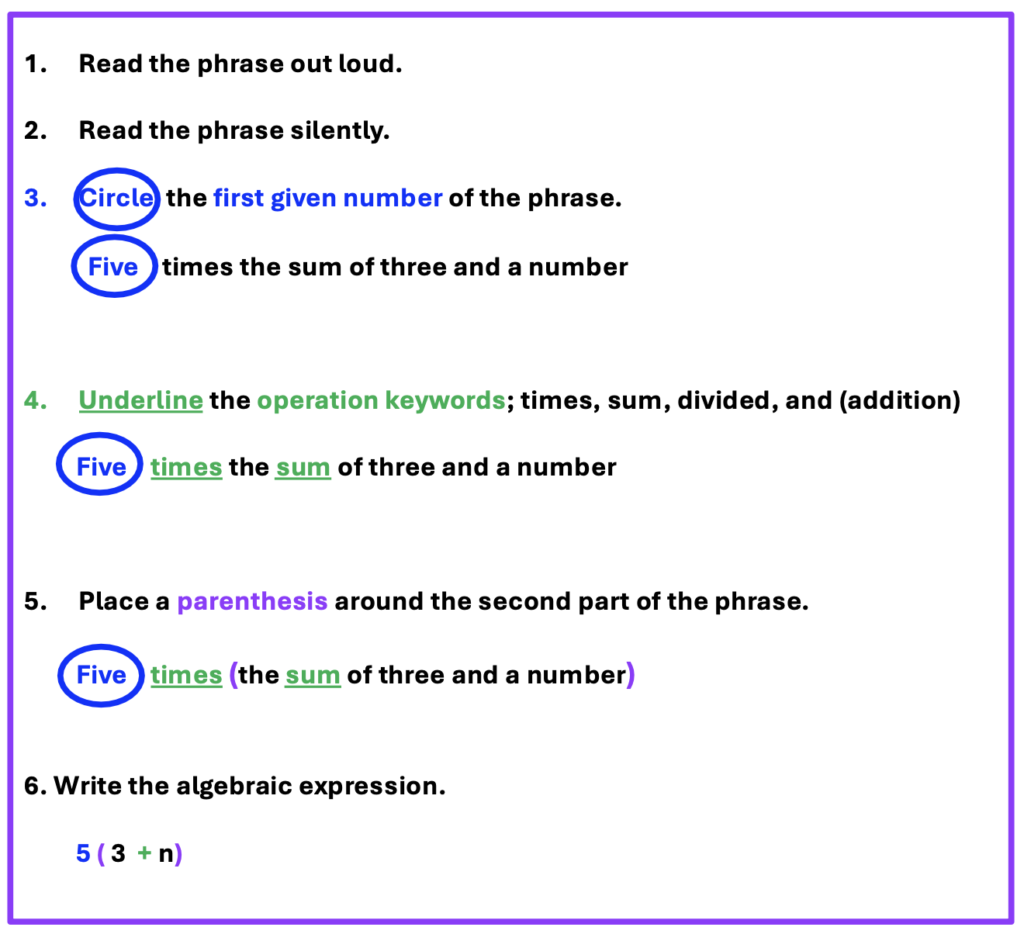
Below are six examples.
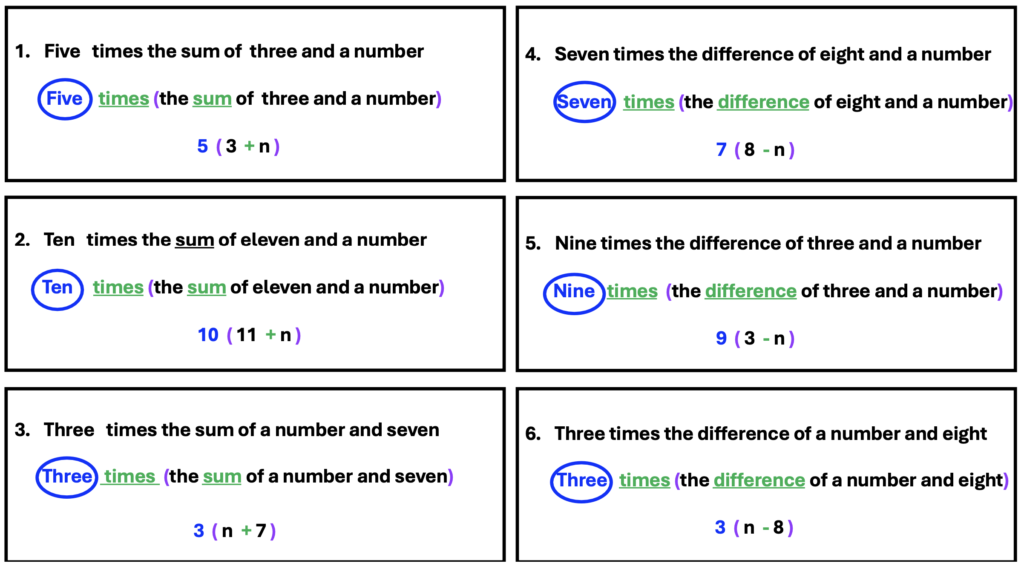
#3 – Expressions Which Result in a Fraction
In addition, algebraic expressions may also result in a fraction. Below are strategies for doing this.
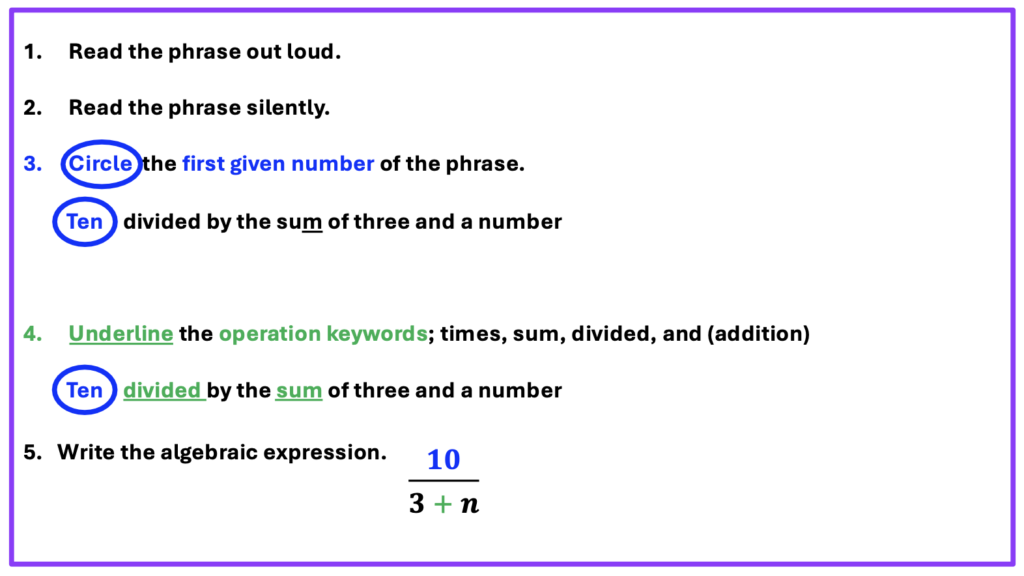
In the next three examples, you will notice that each problem is written in a different arrangement than those with a parenthesis. This time the keywords or phrases are written beside the fraction. This allows students to identify the specific parts. In example 1, most students may know to write ten in the numerator. On the other hand, many students do not recognize that the line underneath may be identified as the phrase, “divided by”.
Furthermore, as students label each part, they begin to grasp the relationship between the words and the algebraic expression.
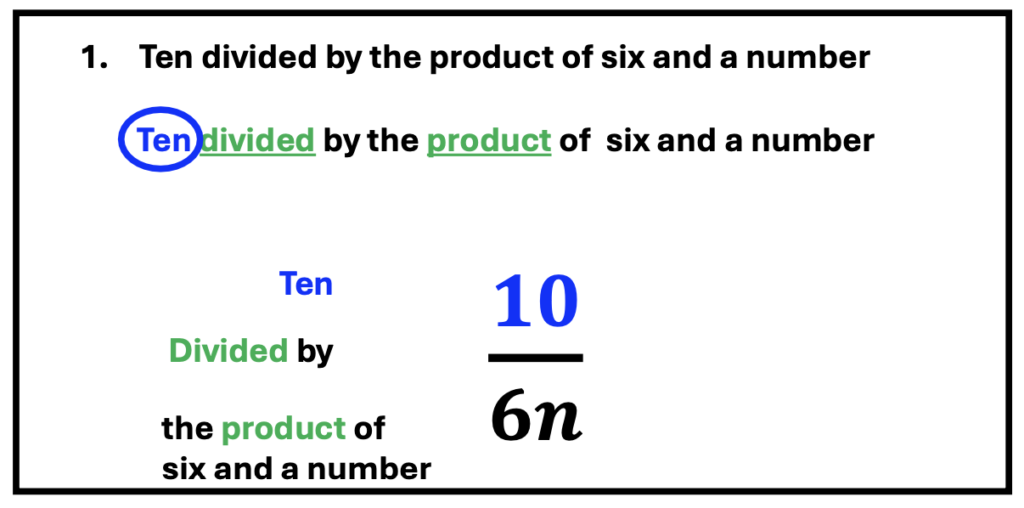
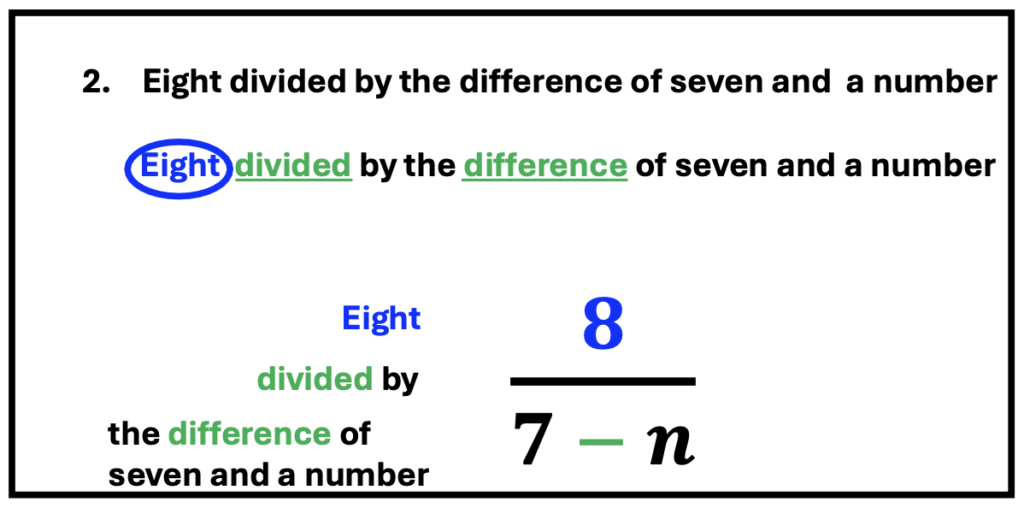
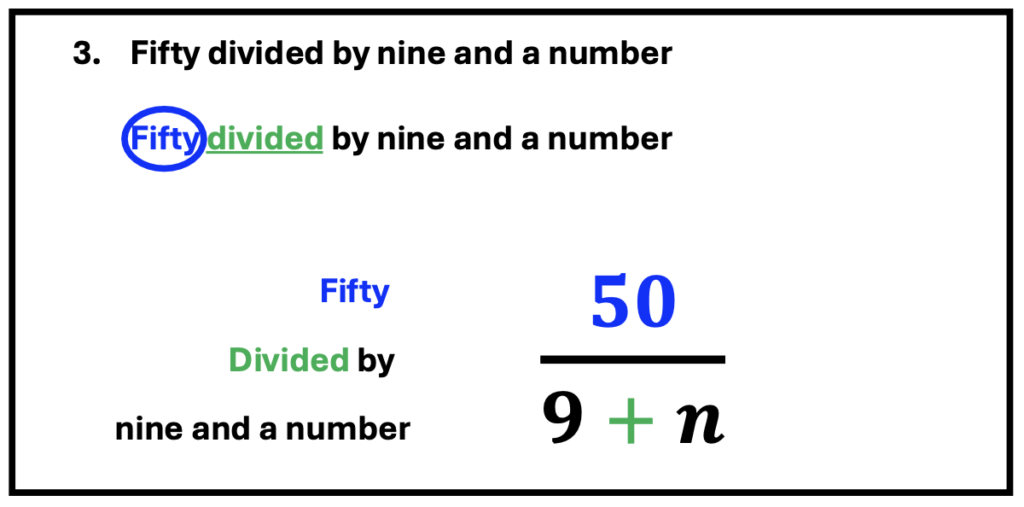
Conclusion
In conclusion, when students are provided tools and detailed examples, success with algebraic expressions can be experienced by all!
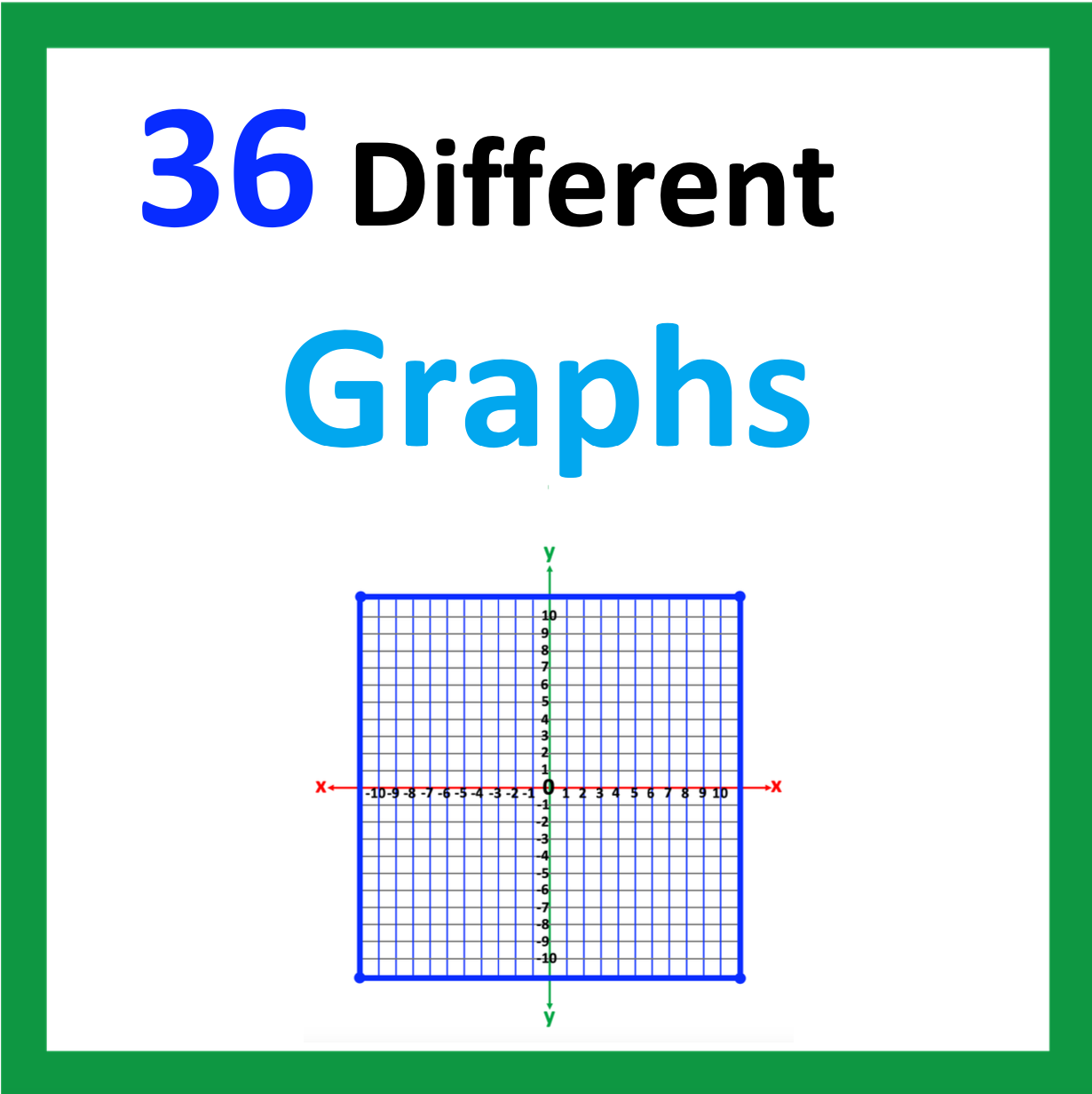
Looking for More Materials?
Click the button below to view more of my educational resources!
